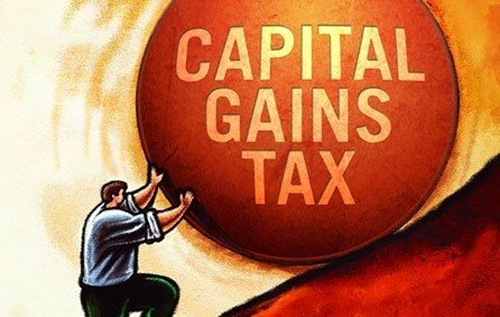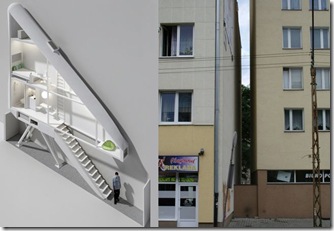
This is how the 1% – that tiny minority of wealthy earners aka the filthy super-rich – keep their cash…
It’s not a good time to be rich. Currently, the world of finance is going through more scandals than British comedian Jimmy Carr has one-liners (but more on him later). And everywhere you look, there’s illegal shifting, trading and sharing of information between the wealthy.
But what about the legal and quasi-legal tricks used by the rich to hang onto their money? It’s a sad fact that most of the methods used by the top 1% to evade the taxman are, if not moral, at least allowed within the letter of the law. Hold onto your purse strings as we list the 10 dirtiest accounting tricks the rich use to keep their cash.
10. Tax Havens
Hanging onto money using the world’s many tax havens has a long and dishonourable history, with areas like the Channel Islands’ freedom from taxes dating back as far as the Norman conquests. This trick is based on the fairly simple idea that if taxes are high in one location, you can gain an advantage by registering your location as being somewhere else instead.
It’s been a significant asset to corporations, but a number of celebrities have also taken advantage of global travel and relocation to avoid paying income tax. U2, David Bowie and The Rolling Stones are just a few of the names that have dodged the taxman by spending time abroad. It isn’t even a big disadvantage; in practice, residents can usually return to their country at a later date, or on visits.
Tax evasion through offshore havens occurs on a huge scale. A recent study by the Tax Justice Network found that approximately $21 trillion is currently being hidden in offshore tax havens. One of the most prolific offenders is the Cayman Islands, which is home to more than 85,000 companies - making it one of the few territories with more registered organizations than people.
9. Shell Companies
A shell company is a type of company that only exists on paper, allowing the person who uses it to funnel money through it and avoid paying taxes. Typically, this type of corporation has a legal existence but provides few or no actual products or services.
One classic way of using these companies is buying and selling through them, which means that the owner does not need to report international operations conducted through the shell company and will be able to avoid any taxes on the profits. Shell companies are also used to conduct various other pieces of shady business, including selling supermarket brand goods without impacting the value of the main brand.
Republican presidential candidate Mitt Romney recently got into hot water over claims that he has been evading the government’s claims on his finance, with one of the accusations that he channelled his income into a shell company in the tax haven of Bermuda. You could say he shares his party’s belief that the government should stay out of private citizens’ affairs…
8. Equity Swaps
An equity swap is another shady method of tax evasion. Basically, it’s an official agreement that allows two parties (say, two rich individuals or companies with in interest in reducing their taxes) to exchange the gain and loss of a set of assets without actually transferring ownership.
One of these swaps is generally pegged to a fixed rate, like LIBOR, which means that the participants can expect a fixed return, either in one payment or at several predetermined points.
This exchange of value allows the parties to avoid transaction costs and, in some cases, local taxes pegged to certain locations. This is obviously a sneaky bonus for people who want to avoid high taxes in a particular area while still getting the benefits of owning assets in another.
7. Avoiding Capital Gains Tax
Capital gains tax automatically kicks in from the sale of certain valuable properties, such as shares, and acts as a deterrent on investors cashing them in. Obviously, though, a number of rich people are interested in avoiding this and have found legal loopholes to allow them to do so.
One cunning way of dodging capital gains tax is by borrowing from an investment bank with the shares as collateral after purchasing options, which set their price at a fixed rate.
This sneaky option allows the borrower to avoid triggering the capital gains tax that would come with actually having the money at hand, while giving them the free cash - and allowing them to repay the loan - either from the profits of using the money or by handing over the shares themselves. Talk about making your money work for you.
6. Evading the Estate Tax
Different places may call it the death duty, the estate tax, or the inheritance tax. But whatever the name, one thing’s for sure: most countries have ways of taking a percentage of a person’s possessions and capital once they have bequeathed it after passing away. While this may arguably be considered unfair, the methods some millionaires use to dodge this tax will make your hair curl.
The main problem with estate tax is that it only focuses on the actual property and capital owned by an individual, and there are a number of exceptions to the assets that it can target. One especially effective way of dodging it is to set up a GRAT (grantor retained annuity trust - basically a trust fund), which invests the money for you: any income earned over and above the interest is completely free of income and estate taxes.
Estate tax isn’t called the last “voluntary tax” for nothing: virtually anyone with the savvy to have earned any money in the first place can set up this loophole, and it’s completely legal as well.
5. Shell Trust Funds
This scheme, which exists in forms such as the Jersey-based K2 fund run by Peak Performance Accountants, has allowed wealthy individuals to pay as little as 1% income tax per year. Subscribers to this kind of “tax plan” pay money into a trust fund, which accepts their money as “donations.” The fund then offers its members cheap loans, which the borrowers subsequently, shall we say, “forget” to pay back. Thus, by disguising their salaries as loans, the members can write off much of their income tax.
This scheme hit the headlines in the UK recently when it was revealed that comedian Jimmy Carr and thousands of other members were using it to eliminate most of their taxes - and this was after Carr had previously appeared in a sketch lampooning Barclays for only paying 1% tax.
This little legal loophole may have technically been within the law when it was devised, but it still looks like one of the shadiest tax dodges on the market to us.
4. Incorporating
In legal terms, there are many advantages to being a company and few to being an earner in the top tax bracket. As a result, a large number of celebrities have incorporated themselves in order to avoid various forms of tax. For example, by channelling your wages into a nominal “corporation” you are able to pay yourself a small, interest-free wage, claim expenses, and reduce income tax.
Others have devised even more cunning loopholes: take, for example, Mitt Romney’s recent manoeuvre of claiming the management fee of his corporation as a capital gain rather than income, which reduced his actual rate of tax rather sharply.
3. Payments in Kind
Payments-in-kind was a former tax loophole that has, fortunately, been rendered obsolete by tighter regulation. Previously, it was possible for executives to receive their payments “in kind” - so rather than receiving a regular wage, they would instead be paid in valuable, tradable commodities, such as gold, silk, or other consumer goods and benefits.
These could then either be sold or “traded on” for additional commodities, which could be used by the executive. Effectively, it reintroduced a mutated form of the old barter system as a tax loophole.
One more modern example is payment-in-kind securities, which give companies the option of paying investors in additional securities rather than cash.
Despite its advantages, the system had an obvious flaw in that being paid with a truckload of gold bars every month would overload even the most powerful executive’s car. There’s a reason we started using money in the first place, after all.
2. Life-Insurance Borrowing
This is an especially clever use of borrowing against an asset - in this case, the asset being a life insurance policy. The way this loophole works is this:
An individual takes out a policy with a large cash dividend - for example, one million dollars. This gives the individual involved a lot of leverage when it comes to borrowing, since most banks will lend up to 90% of the surrender value of the policy. And because this sum isn’t income, it isn’t eligible for income tax or capital gains tax.
This has major advantages over actually earning the money, since earning $1 million would undoubtedly result in taxes of nearly 50%. If you want to be an instant millionaire (or just add to your considerable fortune), this may be the right kind of tax evasion scheme for you.
1. Real Estate Borrowing
Another sneaky way to use assets to make tax-free income is to put mortgages on your current properties until the rental income equals your expenses. This has the advantage of allowing you to borrow money against the value of those properties free of tax: for example, if the property was valued at $2 million and you can borrow 75% of the equity, this would give you $1.5 million of tax-free borrowing.
The money cannot be taxed because, technically, it isn’t income: as with the previous loophole, it’s officially classed as a loan. Unfortunately for the little people, this just proves the truisms of the world of finance: the more money you have, the easier it is to get more.

![Social Media Monster [Infographic]](http://redeapp.com/images/blog/TheSocialMediaMonster.png)





























